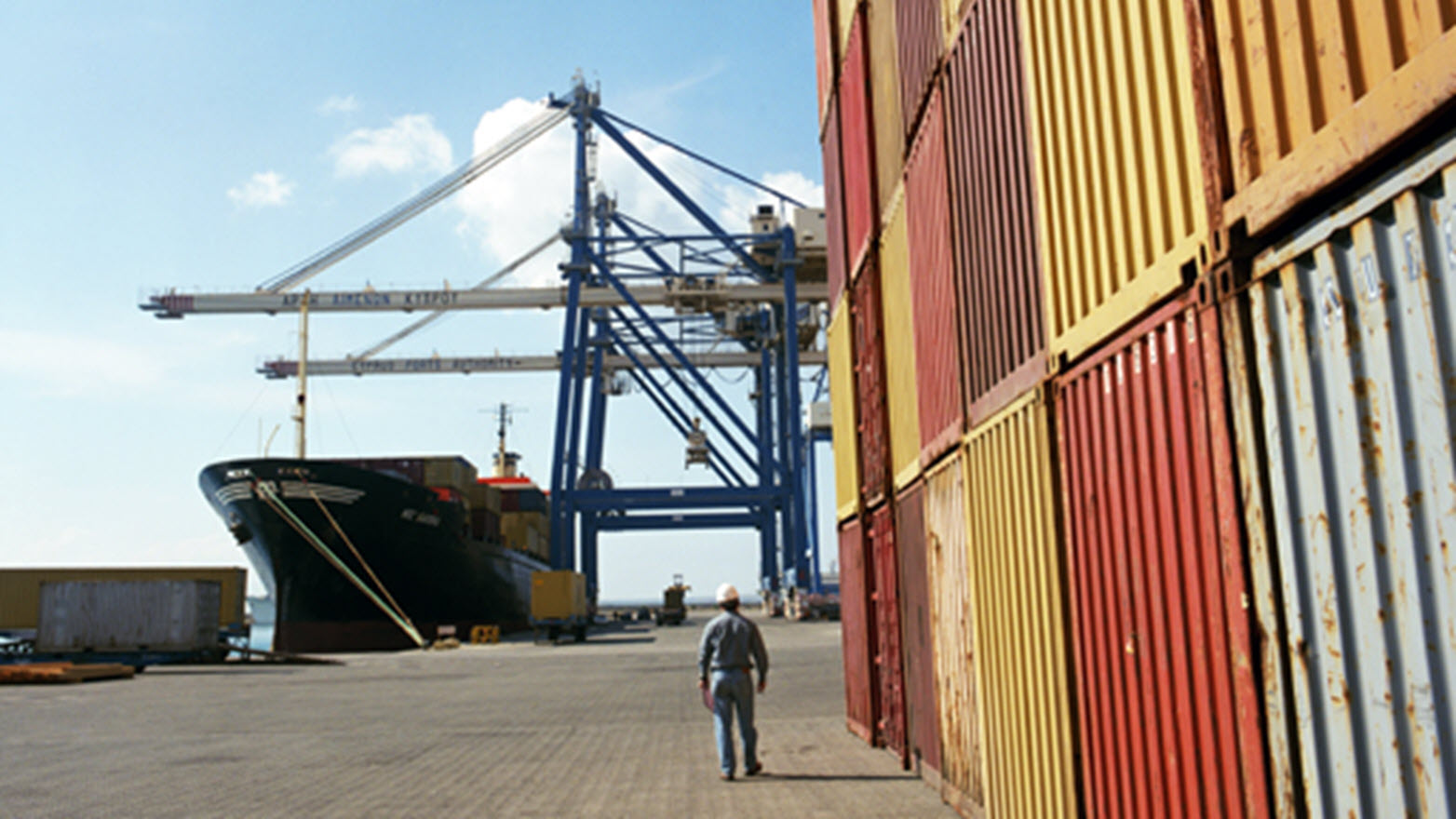Trade & Customs publications
News and articles on trade developments, tariffs, laws, and regulations.

Articles
Reports & Surveys

Export Compliance in the Life Sciences - Keys to International Growth
In the evolving world of pharmaceutical and life sciences, it is vital for companies to understand the activities that involve exports and expose them to risks, and how to mitigate those risks with an effective internal compliance program.

New Chief Trade Officer's First 100 Days
The KPMG Trade & Customs practice helps companies keep up with changing global trade regulations while processing transactions in real time without compromising compliance.

2019 Tariff Survey Infographics
How are tariffs impacting organizations? Over 100 trade and operations professionals share their insights.

Duty Drawback Industry Benchmarking
This survey gauges the impact of Duty Drawback as a mechanism to recover increased punitive tariffs by section 201 and 301 as well as the effect of regulatory changes enacted by the Trade Facilitation and Enforcement Act.

Trade Enforcement Survey 2018
This report provides the finding of how industry peers are prepared for, or managing, U.S. Customs and Border protection reviews and audits.

First Sale for Export Retail Industry Benchmarking
This report provides the findings of the FSFE Survey conducted by KPMG in 2018.

How to Make the Case
Remember that time when your goods were held at the port, and your staff rushed the paperwork to Customs, only to find you had declared an incorrect classification, valuation, or preferential origin? Or that time when a review uncovered systemic noncompliance errors that required a disclosure and payment of duties owed? We do and would prefer not to see it again.

2021 Export Controls & Sanctions Survey
Balancing business priorities and risk realities - In February 2021, KPMG engaged export and sanctions professionals at multinational firms to gather their input on a variety of business-critical issues.

2020 Transfer Pricing and Trade Compliance Survey Results
This survey provides insight into how companies handle, manage, and react to transfer pricing adjustments from a tax and customs perspective.

How Do Tariffs Affect Deal Value?
This reports spotlights five questions that can help organizations understand the role of trade and tariffs in determining deal value.

A Framework for OFAC Compliance Commitments: An Overview
On May 2, 2019, the office of Foreign Assets Control (OFAC) released "A Framework for OFAC Compliance Commitments" (the Framework), which details the agency's view on the most important elements of a sanctions compliance program (SCP).

Trade Enforcement Survey 2018
This report provides the finding of how industry peers are prepared for, or managing, U.S. Customs and Border protection reviews and audits.

Blockchain Solutions for Duty Drawback
Duty drawback is one of the most complex areas of global trade. Our blockchain solution helps pre-validate data in one location, helping you to efficiently and smoothly validate and file your drawback claims.

Key Controls for Export Compliance Programs
Your export controls and sanctions program rests on your key controls. Identifying and managing them is central to maintaining a strong compliance program.
External Publications
Supply Chain Disruption in Asia Pacific | Managing the Trade and Customs Function
Trade and customs teams have their hands full these days as disruptions in global supply chains persist. However, looking ahead, the coming years hold the promise of new opportunities for growth, especially in the Asia Pacific region, and for trade and customs teams to help their companies realize more value.
Creating Supply Chain Value with FTZs
In this article, Trade & Customs leaders from KPMG discuss how the Foreign Trade Zones programme can offer a host of operational benefits and financial savings to businesses – US or non-US – importing into the United States.
Transfer Price Adjustments Don’t Necessarily Increase Import Duty Costs
June 2021
This articles discusses how the global pandemic has forced multinational enterprises to reassess previous transfer pricing policies and consider making compensating adjustments to bring their intercompany transfer price for goods into an acceptable arm's-length range, often retroactively.
Peace of Mind, Better Work, Higher Profile
July 2021
How outsourcing key activities can help elevate the global trade function
Transfer Price Adjustments Don’t Necessarily Increase Import Duty Costs
In this article, the authors discuss challenges arising for multinational enterprises to mitigate the effects of the fluctuations in the prices of imported goods from a customs perspective.
Peace of Mind, Better Work, Higher Profile
In this article, KPMG Trade & Customs leaders discuss how outsourcing key activities can help elevate the global trade function.
Transfer Pricing Changes May Result in Potential Customs Tariff Opportunities (COVID-19)
This article highlights pertinent compliance and planning issues involved with COVID-19 related transfer pricing opportunities, which often require advance customs, accounting, and TP coordination and planning.
Confronting Tariffs: Trade War Tips for CPAs
Trade & Customs leaders from KPMG share tactics and strategies CPAs can use to assist their organizations as they turn today’s trade disruption into a competitive opportunity now and in the years ahead.
Transfer Pricing Adjustments? Don’t Forget About Customs
Multinationals may make new or larger-than-usual financial adjustments to bring transfer prices within arm’s length ranges as a result of additional tariffs. This article focuses on these transfer pricing adjustments.
Service Insights

Updated CTPAT Trade Compliance Program Requirements
The Customs Trade Partnership Against Terrorism (CTPAT) Trade Compliance Program is a core trade compliance program for many importers as it allows them to assume responsibility for import management, while fostering a relationship with U.S. Customs and Border Protection (CBP). KPMG can assist with a wide array of CTPAT services.

U.S. Duty Drawback - Why Now?
Duty drawback might seem tricky, but the right combination of automation and human know-how allows for a streamlined process that optimizes duty recovery while prioritizing compliance.

Foreign Trade Zone Services
Making sound investments in trade technology and processes to meet changing regulatory requirements is integral to the efficient and compliance operation of a foreign-trade zone (FTZ).

Enhanced Export Due Diligence
KPMG Trade & Customs services helps clients meet the ever-increasing regulatory expectations for end-use and end-user export due diligence.

New Year Brings New Chinese Trade Controls on Cryptography
How China's new import and export controls on commercial cryptography may impact your business.

China's Export Control Law
Professionals from the KPMG Trade & Customs - Global Export Controls and Sanctions practice discuss the Export Control Law of the People's Republic of China, and what it will mean for exporters.

Sanctions Screening Optimization for Corporations
KPMG uses tested methodology to help ensure the success of sanctions screening programs.

BIS Issues Two New Rules with Far Reaching Effect
Getting ahead of Bureau of Industry and Security (BIS) regulations will help exporters remain compliant and limit business disruption.

First Sale for Export: A Crucial Savings Opportunity
First Sale for Export has been a duty-savings mainstay for years. But its popularity has exploded given the dynamic trade landscape. First Sale drives continual savings with minimal investment. If your company isn’t leveraging it—you may be a step behind.

KPMG Buy America, Buy American, Trade Agreement Acts Services
Are you complying with U.S. government domestic preference programs in a global economy?

Trade Savings for Retailers - COVID19
Reducing import costs in a turbulent time to improve cash flow.. How the retail industry can manage trade disruption from COVID-19.

Developing an Agile Tariff Strategy
Learn more about developing an agile tariff strategy while preparing for an economic downturn. There are a number of strategies companies should consider to help exclude, mitigate, recover, and defer tariffs during a period of uncertainty.
KPMG Tariff Tracker (February 2020)
This resource provides a snap shot of Section 301 tariffs on China-origin good; EU-origin-good; and Section 232 tariffs on global steel and aluminum products.
TaxNewsFlash-Trade & Customs
Explore more
Meet our team








































